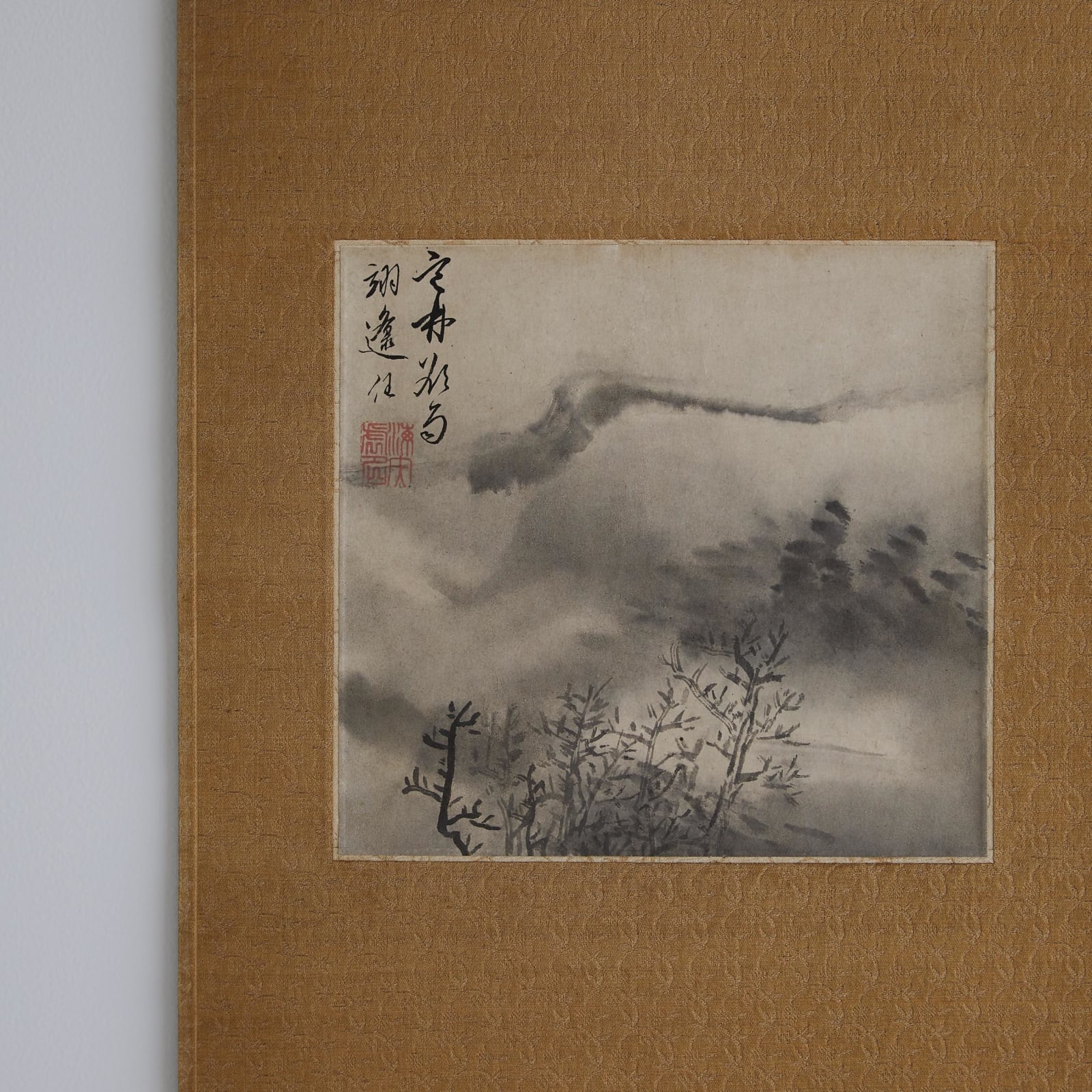Tachihara Kyōsho (1785–1840)
Wintry Woods Just Before Rain
Ink on paper, hanging scroll
Title inscribed by the artist
Seal: Kaidai kyomei
20.2 x 21.5 cm
134 x 32 cm (overall)
Further images
Tachihara Kyosho himself titled it Wintry Woods Just Before Rain. “Just before rain” as a subject often implies summer scenery; yet, in this painting, the gnarled old trees depicted in the foreground arguably indicate a wintry landscape. The gnarled trees neither suggest rain. The tracts of woods in the background are applied with the “Mi dots,” creating a blurry, atmospheric effect as if it is shrouded in mist. By laying the small horizontal dashes, “Mi dots” reproduce an exuberant celebration of green, which typifies the summer landscape with an expanse of mist and rain. Kyosho makes full use of such a characteristic in this work. Motifs, such as bands of mist with a washed out tint pervading the space from the left, the trees sloping down from the right, as well as a strip of dark clouds flowing through the sky, undoubtedly respond to the title “just before rain.” Kyosho’s signature presentation of cloud is similar in style to that in his work Mount Fuji done in 1839; a dim, overcast sky in this work may be implying a downpour, which responds to the inscription. A sense of uneasiness in this small-scale hanging scroll is unconventional among the Edo period paintings, even surpassing the early twentieth century Japanese paintings. Both the first character “yoku” and the second one “gen” (different in form but same in meaning and sound with Kyosho’s signature) of the signature seen in this work can be found in Blossoming Plums and Moon (1836); at the same time, the identical seal is also used in Mount Fuji. The evidences show that the present work may be done in Kyosho’s fifties.
Tachihara Kyosho (painter; 1785–1840)
Also known as Jin, Shien, Enkei, Jintaro, Token, Gyokusosha etc.
Late Edo painter and feudal retainer of the Mito clan. Learned painting under Gessen, and later became a disciple of Tani Buncho. Befriended Watanabe Kazan and Tsubaki Chinzan. Studied the Chinese Yuan and Ming paintings, and particularly excelled at sansui (landscape) and kacho (bird-and-flower) painting.
Tachihara Kyosho (painter; 1785–1840)
Also known as Jin, Shien, Enkei, Jintaro, Token, Gyokusosha etc.
Late Edo painter and feudal retainer of the Mito clan. Learned painting under Gessen, and later became a disciple of Tani Buncho. Befriended Watanabe Kazan and Tsubaki Chinzan. Studied the Chinese Yuan and Ming paintings, and particularly excelled at sansui (landscape) and kacho (bird-and-flower) painting.





